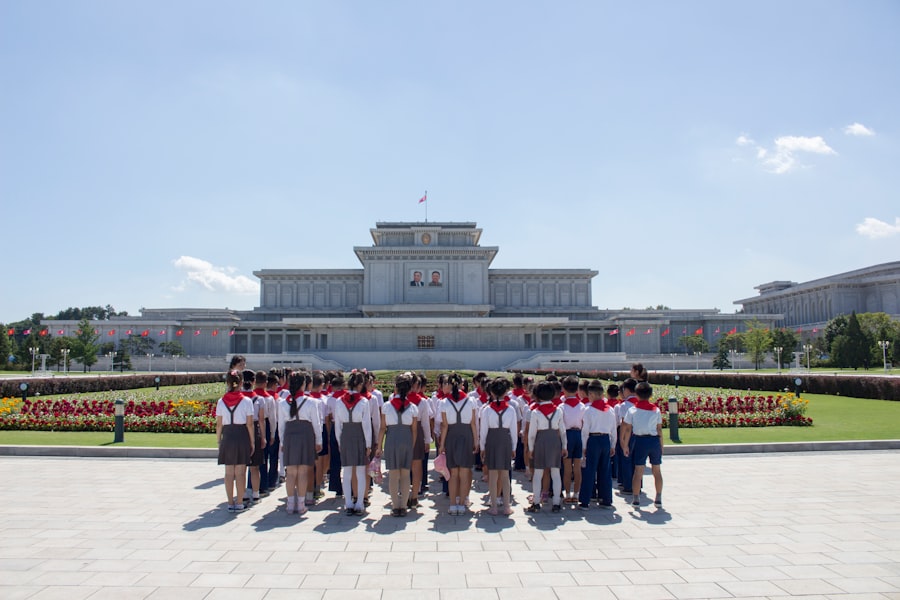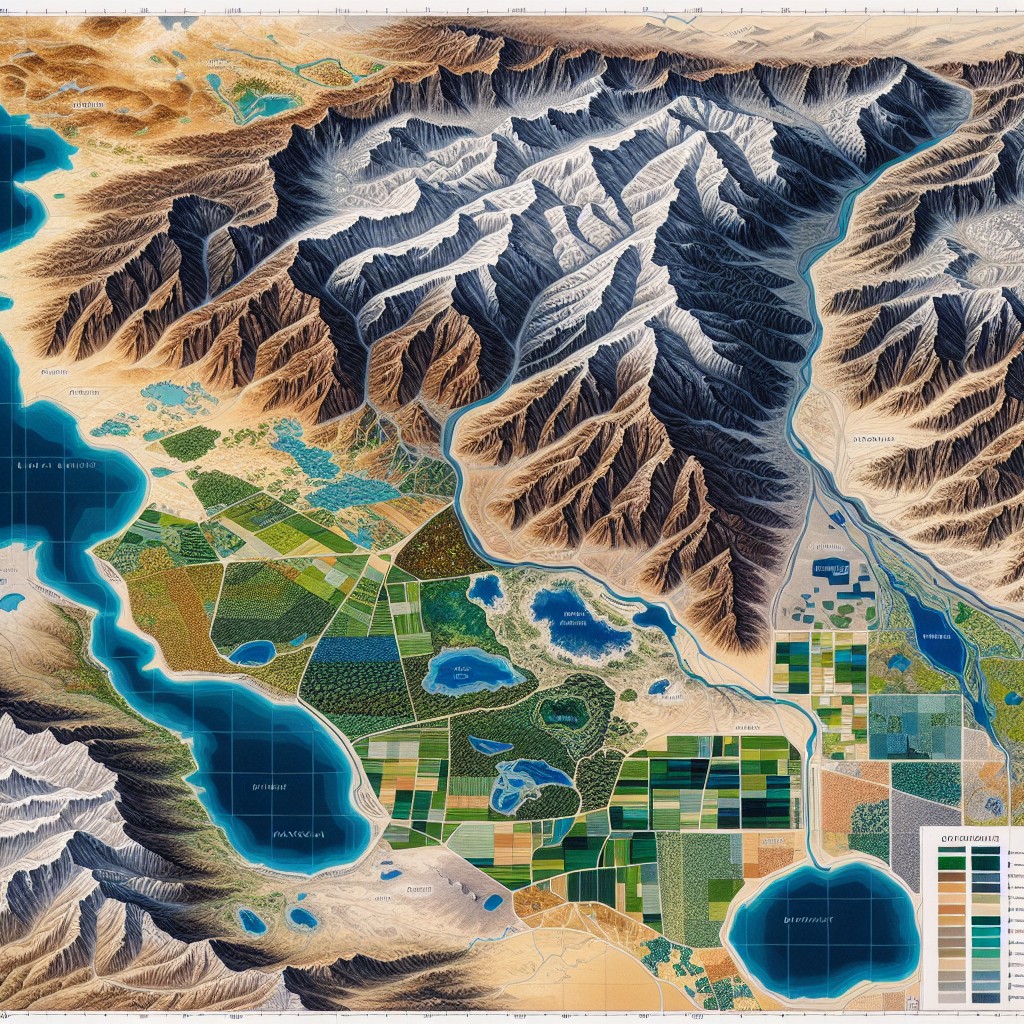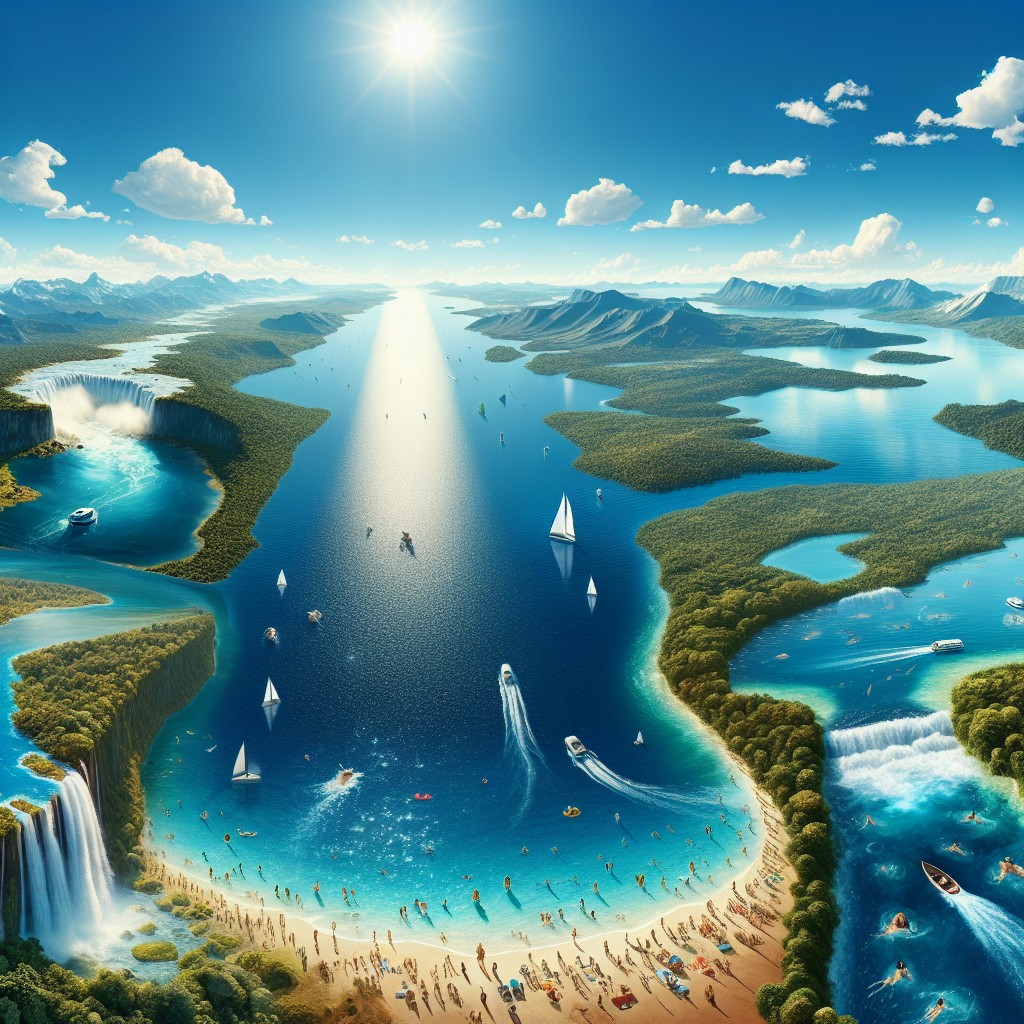
North Korea, officially known as the Democratic People’s Republic of Korea (DPRK), is a country located on the Korean Peninsula in East Asia. It is bordered by China to the north, Russia to the northeast, and South Korea to the south. With a population of approximately 25 million people, North Korea is one of the most secretive and isolated countries in the world.
The political system in North Korea is a highly centralized and authoritarian regime. The country is ruled by the Kim dynasty, which has been in power since its establishment in 1948. The current leader is Kim Jong-un, who took over after the death of his father, Kim Jong-il, in 2011. The ruling party in North Korea is the Workers’ Party of Korea, which has a monopoly on political power.
North Korea’s isolation and secrecy can be attributed to a combination of factors. Firstly, the country has a strict policy of self-reliance and has limited its interactions with the outside world. This isolationist approach has allowed the regime to maintain control over its population and limit the influence of external forces. Additionally, North Korea’s government tightly controls information flow within the country, making it difficult for citizens to access information from outside sources.
Summary
- North Korea is a mysterious and isolated nation with a fascinating history.
- Kim Jong-un and his regime are enigmatic and control the narrative through propaganda.
- Daily life in North Korea is tightly controlled and citizens have limited freedoms.
- North Korea’s nuclear ambitions and military might pose a threat to international relations.
- The economic challenges and opportunities of a socialist state are a key issue for the future of North Korea.
The Fascinating History of North Korea: From the Korean War to Present Day
North Korea’s history is marked by conflict and division. Following World War II, Korea was divided into two separate countries along the 38th parallel: North Korea and South Korea. The division was a result of competing ideologies and geopolitical interests between the Soviet Union and the United States.
In 1950, North Korea invaded South Korea, sparking the Korean War. The war lasted for three years and resulted in a stalemate, with an armistice signed in 1953. The border between North and South Korea remains one of the most heavily fortified in the world.
After the Korean War, North Korea underwent a process of nation-building under the leadership of Kim Il-sung, the country’s founding father. Kim Il-sung established a cult of personality and implemented a socialist economic system. He ruled until his death in 1994, at which point his son, Kim Jong-il, took over.
Under Kim Jong-il’s leadership, North Korea faced economic hardships and international isolation. The country suffered from food shortages and economic decline, while also pursuing a nuclear weapons program. Kim Jong-il died in 2011 and was succeeded by his son, Kim Jong-un.
The Enigmatic Leader: Understanding Kim Jong-un and His Regime
Kim Jong-un’s rise to power was met with speculation and uncertainty. He was relatively unknown to the outside world prior to his succession, and little was known about his leadership style or political ideology. However, over the years, some insights have been gained into his regime.
Kim Jong-un has maintained a tight grip on power through a combination of political purges and a cult of personality. He has consolidated power within the ruling Workers’ Party and the military, ensuring their loyalty to his regime. His leadership style is characterized by a mix of authoritarianism and pragmatism.
The Workers’ Party of Korea plays a central role in North Korea’s government. It is responsible for implementing the regime’s policies and maintaining control over all aspects of society. The military also holds significant power in North Korea, with the Korean People’s Army being one of the largest standing armies in the world.
Life in North Korea: A Glimpse into the Daily Lives of the Citizens
| Aspect of Life | Statistics |
|---|---|
| Population | 25.8 million |
| Life Expectancy | 72 years |
| Literacy Rate | 100% |
| Access to Internet | Not available for general public |
| Access to Electricity | Only available in major cities |
| Access to Healthcare | Free but limited resources and equipment |
| Access to Education | Free but heavily censored and controlled by government |
| Freedom of Speech | Not allowed, heavily censored and controlled by government |
| Access to Food | Food shortages and rationing, malnutrition is common |
| Human Rights | Severely restricted, citizens are not allowed to leave the country without permission |
Life in North Korea is characterized by numerous challenges and restrictions. The country faces chronic food shortages, with a significant portion of its population suffering from malnutrition. The government prioritizes resources for its military and ruling elite, leaving ordinary citizens struggling to meet their basic needs.
Access to information is tightly controlled in North Korea. The government strictly censors media and limits internet access, making it difficult for citizens to access information from outside the country. The education system is also heavily influenced by the regime, with a focus on indoctrination and loyalty to the state.
Healthcare in North Korea is limited, with a lack of resources and infrastructure. The country faces challenges in providing adequate medical care to its population, leading to high rates of preventable diseases and poor health outcomes. Additionally, the government imposes strict social controls, limiting personal freedoms and enforcing conformity to state ideology.
The Propaganda Machine: How the Regime Controls the Narrative
North Korea’s state-controlled media and propaganda apparatus play a crucial role in shaping the narrative within the country. The regime uses propaganda to promote the cult of personality surrounding the Kim dynasty and maintain its grip on power.
The state-controlled media in North Korea serves as a tool for disseminating government propaganda and controlling information flow. It portrays the Kim family as infallible leaders and promotes a narrative of North Korea as a strong and prosperous nation. The media also demonizes external forces, particularly the United States and South Korea, portraying them as enemies of the state.
Propaganda is not limited to traditional media outlets in North Korea. It permeates all aspects of society, from schools to public spaces. Iconography of the Kim family is ubiquitous, with portraits and statues of Kim Il-sung and Kim Jong-il displayed throughout the country. Propaganda slogans are also prominently displayed, reinforcing loyalty to the regime.
The Nuclear Threat: North Korea’s Ambitions and International Relations

North Korea’s nuclear program has been a source of concern for the international community for decades. The country has conducted multiple nuclear tests and missile launches, defying international sanctions and raising tensions in the region.
The development of nuclear weapons by North Korea is seen as a means of ensuring its survival and deterring potential aggression from external forces. The regime views nuclear weapons as a symbol of strength and a bargaining chip in negotiations with other countries.
North Korea’s nuclear ambitions have strained its relationships with other countries, particularly the United States and South Korea. The United States has imposed economic sanctions on North Korea in an attempt to curb its nuclear program, while South Korea has sought to engage in dialogue and promote peace on the Korean Peninsula.
China plays a crucial role in North Korea’s nuclear issue. As North Korea’s closest ally and largest trading partner, China has significant influence over the regime. However, China’s approach to North Korea has been complex, as it seeks to balance its strategic interests with the need to maintain stability in the region.
The Military Might: Exploring North Korea’s Armed Forces
North Korea’s military is one of the largest standing armies in the world, with approximately 1.2 million active-duty personnel. The Korean People’s Army (KPA) is responsible for defending the country and maintaining internal security.
The KPA is divided into ground forces, navy, air force, and special operations forces. It possesses a range of conventional weapons, including tanks, artillery, and ballistic missiles. While North Korea’s military capabilities are formidable, there are concerns about the readiness and modernity of its equipment.
The military plays a significant role in North Korean society and politics. It is deeply integrated into the country’s political system, with military officials holding key positions within the government. The military also serves as a tool for maintaining control over the population and suppressing dissent.
The Cult of Personality: The Iconography of Kim Il-sung and Kim Jong-il
The cult of personality surrounding North Korea’s founding father, Kim Il-sung, and his son and successor, Kim Jong-il, is a central aspect of the regime’s propaganda apparatus. The Kim family is portrayed as infallible leaders and the saviors of the nation.
Iconography of the Kim family is ubiquitous in North Korea. Portraits and statues of Kim Il-sung and Kim Jong-il are displayed throughout the country, and their birthdays are celebrated as national holidays. The regime promotes a narrative of the Kim family as benevolent leaders who have brought prosperity and strength to the nation.
Propaganda plays a crucial role in promoting the cult of personality. The state-controlled media portrays the Kim family as god-like figures, capable of performing miracles and possessing supernatural powers. This propaganda serves to legitimize the regime’s rule and maintain loyalty among the population.
The Economic System: The Challenges and Opportunities of a Socialist State
North Korea’s economic system is based on socialism and self-reliance. The government controls all major industries and resources, with limited private enterprise allowed. However, the country faces numerous challenges in its economic development.
One of the major challenges facing North Korea is international sanctions. The United Nations has imposed multiple rounds of sanctions on North Korea in response to its nuclear program, limiting its access to foreign markets and resources. These sanctions have had a significant impact on the country’s economy, exacerbating its existing economic challenges.
North Korea also faces limited resources and infrastructure. The country lacks access to modern technology and relies heavily on outdated equipment and methods. Additionally, the government’s focus on military spending has diverted resources away from other sectors, such as agriculture and industry.
Despite these challenges, there have been some recent economic reforms in North Korea. The government has implemented limited market-oriented reforms, allowing for some private enterprise and foreign investment. These reforms have led to the emergence of a small middle class in North Korea, but significant economic growth remains elusive.
The Future of North Korea: Prospects for Reunification and Reform
The future of North Korea is uncertain, with prospects for reunification with South Korea and political and economic reform being hotly debated topics. The role of international actors, particularly China and the United States, will play a crucial role in shaping North Korea’s future.
Reunification with South Korea is a long-standing goal for both countries. However, achieving reunification is a complex and challenging process. The two countries have divergent political systems and economic structures, making the path to reunification difficult to navigate.
Political and economic reform in North Korea is also a topic of debate. Some argue that the regime is too entrenched and resistant to change, making reform unlikely. Others believe that economic pressures and changing dynamics in the region could lead to gradual reform in North Korea.
China and the United States have significant influence over North Korea’s future. China has historically been North Korea’s closest ally and largest trading partner. Its support is crucial for the regime’s survival. The United States, on the other hand, has taken a more confrontational approach towards North Korea, imposing economic sanctions in an attempt to curb its nuclear program.
In conclusion, North Korea remains one of the most mysterious and isolated countries in the world. Its political system, led by the Kim dynasty, is highly centralized and authoritarian. Life in North Korea is characterized by numerous challenges and restrictions, including food shortages and limited access to information. The regime maintains control through a combination of propaganda and military might. The future of North Korea is uncertain, with prospects for reunification and reform being hotly debated. The role of international actors, particularly China and the United States, will play a crucial role in shaping North Korea’s future.
FAQs
What is North Korea?
North Korea, officially known as the Democratic People’s Republic of Korea (DPRK), is a country located in East Asia. It shares borders with China, Russia, and South Korea.
What is the capital of North Korea?
The capital of North Korea is Pyongyang.
What is the population of North Korea?
As of 2021, the estimated population of North Korea is around 25 million people.
What is the official language of North Korea?
The official language of North Korea is Korean.
What is the currency of North Korea?
The currency of North Korea is the North Korean won.
What is the political system of North Korea?
North Korea is a single-party state with the Workers’ Party of Korea as the ruling party. The country is led by the Supreme Leader, currently Kim Jong-un.
What is the economy of North Korea like?
North Korea has a centrally planned economy, with the government controlling most aspects of economic activity. The country faces significant economic challenges, including international sanctions, a lack of resources, and limited access to foreign markets.
What is the relationship between North Korea and South Korea?
North Korea and South Korea have a complicated relationship, with tensions between the two countries dating back to the Korean War in the 1950s. The two countries remain technically at war, as no peace treaty was signed at the end of the conflict. However, there have been efforts to improve relations in recent years, including high-level talks and joint sporting events.


